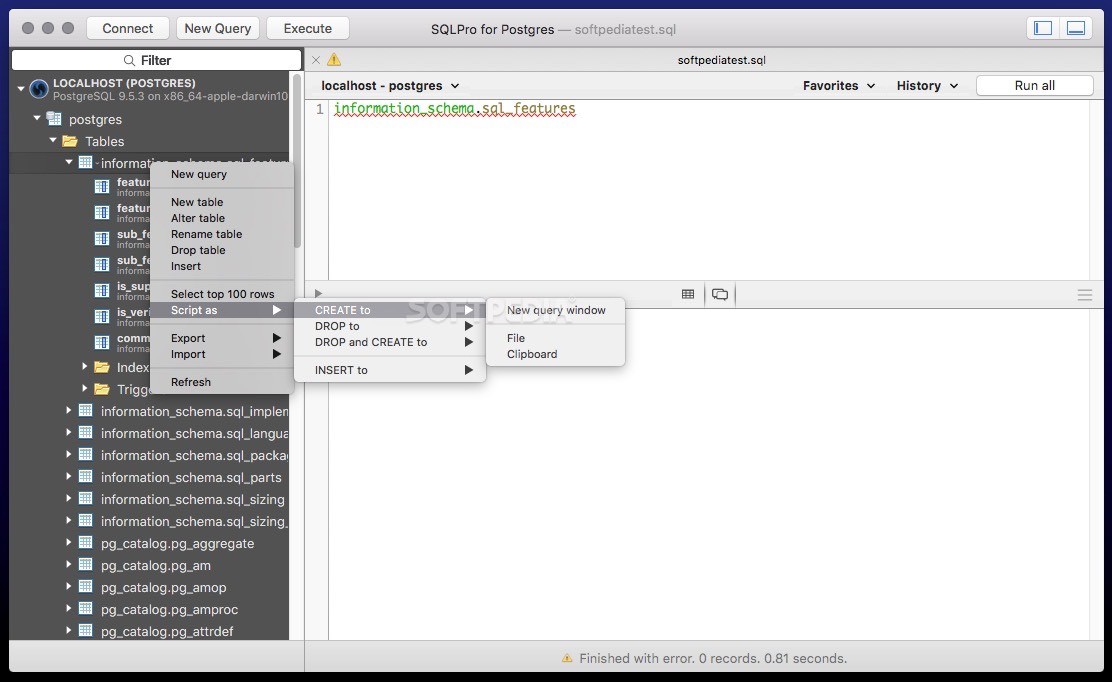
Just as we start by defining the Java model, in code-first migration approach, we write the SQL schema and apply it to the PostgreSQL database. Also, note that this post will discuss the PostgreSQL database migrations instead of how RESTful services are configured, we have covered the RESTful bits in our Spring Boot and RESTful APIs with PostgreSQL series, please see. Once the schema changes are run on production it will be difficult to reverse the change as it might bring in unwanted PostgreSQL database down time.īeyond this step, I assume that you have created a Spring Boot application, if you have not yet, you can always create a fresh copy of Spring Boot application from Spring Initializr.

Verifying the SQLīefore we go ahead, it is better to always verify the SQL and the schema changes you have made in the testing environment. The Flyway plugin will read the migrations from the resources and apply them one by one to synchronize the PostgreSQL database schema and app code. Instead of having Hibernate generate the schema, we write the SQL scripts and add them to our application resources. To do this, we will use Flyway as the database migration tool and create the database schema manually. They help DBAs and Operations team manage and maintain a version history for your database schema and rollback if latest schema poses potential performance / security problems. What are migrations? The database migrations in relational database world are the changes to the schema of your database. These changes are known as migrations or database migrations to be precise.

Then, as your schema changes, you write these changes in SQL and add them to your app’s version control history. JPA (or Hibernate) will allow us to map the Java entities and their properties to the backend SQL query, but what we will change in the process is the way the schema is created. Controlling PostgreSQL database Schemaįor a fresh Java web application, you can start off the development with Java models and SQL schema side-by-side in a versioned environment. This leads to problematic behaviors in Java apps and Hibernate suggests that you consider controlling the schema changes manually and let Hibernate handle the object mappings. JPA be able to manage your tables and their connections, but not be able to handle triggers / advanced key constraints.Īpart from this, if you end up modifying the database schema outside your application, JPA will not be able to accommodate the changes in your Java models. JPA offers a very thin support of features when it comes to databases.If you have a DBA, it is best approach to include them in your design process. Your PostgreSQL database schema is controlled by the JPA-this can be a good thing if you want to avoid managing the DBA side.Your PostgreSQL database schema gets destroyed and recreated each time you apply the changes from scratch.Or apply the changes when there is a schema difference (the update configuration)Īlthough it is good for rapid prototyping and development / testing environment, it is discouraged to be used in the production environments.Either apply the changes always on the startup.In Spring Boot and JPA/Hibernate, we were able to control the schema generation directly from our Entity objects and apply that to PostgreSQL database automatically.

#Postgres app update db version how to#
In this post, we will see why letting Hibernate control the schema changes is not best approach, and how to manage the schema, apply it to PostgreSQL database, synchronize your Java objects and PostgreSQL database tuples and how to version control your schema so your PostgreSQL database and web app are in sync. In some previous posts on the topic of RESTful services in Spring Boot, we discussed how we can use JPA to automatically create and automatically apply the schema to the PostgreSQL database. If you are building a Spring Boot application for your next project, you would also be preparing and planning for the PostgreSQL database to store the data generated by your customers.


 0 kommentar(er)
0 kommentar(er)
